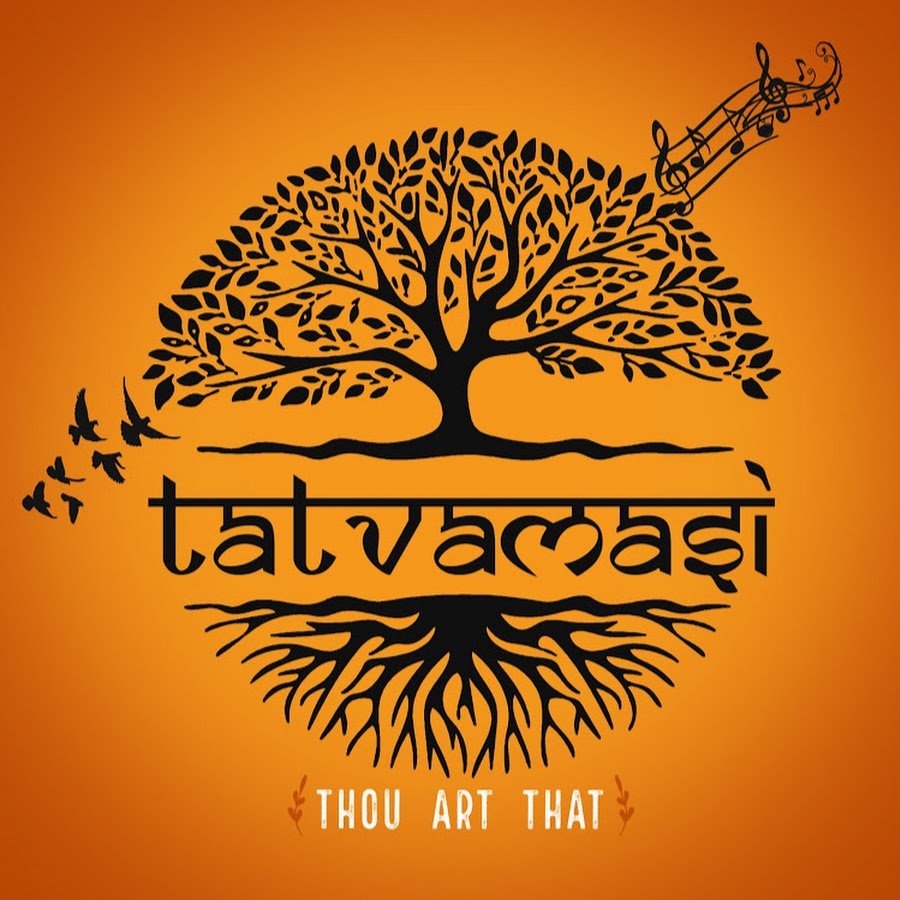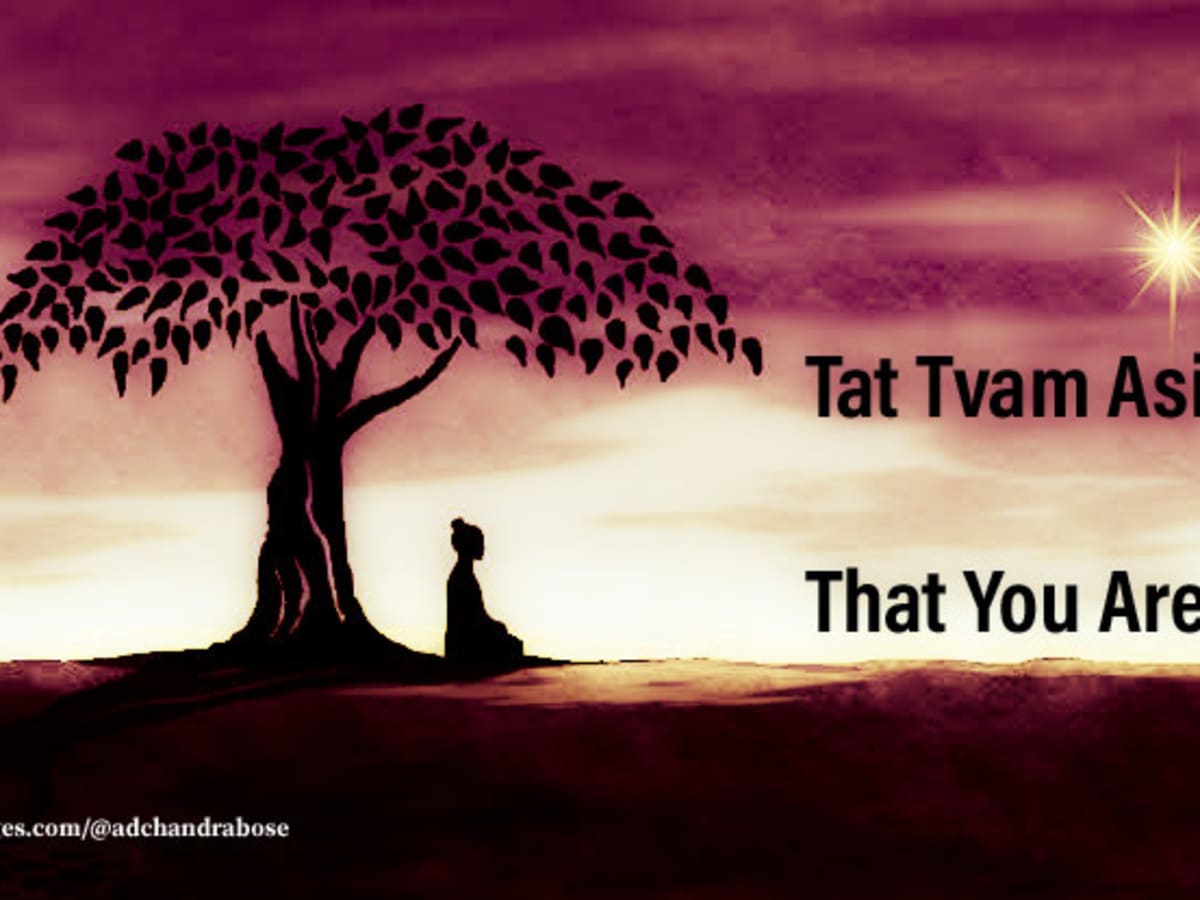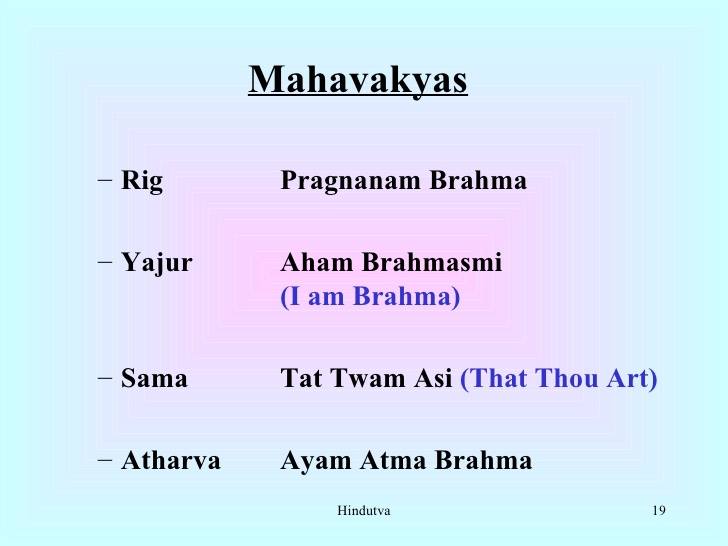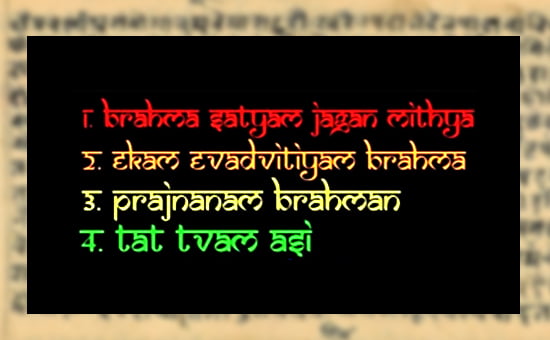
The contribution of the Upanishads in taking the Vedic religion to its pinnacle can never be forgotten. But in the Upanishads, there are some great words whose meaning is still difficult for people to understand, today we will understand the meaning of Tatvamasi described in Chapter 6 of Chhandogya Upanishad .
Yes, although the total number of Upanishads is more than 200, 13 of them are major Upanishads, and there are many verses in them and some of the main sentences of those verses were included in the list of Mahavakyas.
The main reason behind the creation of Mahavakyas was that people could understand very high and deep things. Just as we use idioms to indicate something big, in the same way, Mahavakyas were used to describe what a person is like.
There are many important verses in Chhandogya Upanishad, which every Sanatani should read and adopt in life, but for some reason, if you can’t read them in detail, then you must know the literal meaning of Mahavakya.
Otherwise, we will be deprived of the biggest thing that the Upanishads want to convey to us, so let’s understand Tattvamasi or Tat Tvam Asi.
What Is Tattvamasi or Tat Tvam Asi?

Tattvamasi or Tat Tvam Asi is among the Mahavakyas outlined in the Indian Upanishads and scriptures, which truly means, “That Thou Art” or “ Aham Brahma Asmi / Aham Brahmasmi “. This is described in Vedantic Sanatana Dharma.
This phase’s origin can be easily traced to the Chandogya Upanishad. Chandogya Upanishad is typically a text embedded in Sanskrit within the Sama Veda & Ayam Atma Brahma (this Atman is Brahman) in the Mandukya Upanishad of the Atharva Veda, among the oldest Hindu scriptures. The text serves as a basis for the Hindu philosophy’s Advaita Vedanta branch, providing detail on the ideas of Atman & Brahman.
The implied meaning of this phrase is that the Supreme Self or Individual Self Knowledge – in its pure, original, primordial state – is partially or entirely identical or identifiable with the “Ultimate Reality” that’s the origin and ground of all phenomena.
The Sanskrit word Tat Tvam Asi is mainly used within yoga and Hindu philosophy that refers to the unity of Atman (which means the individual self or individual soul) along with Supreme Brahman (which means the Absolute or universal consciousness).
This Sanskrit text phrase’s direct translation derives from 3 Sanskrit roots:
- Tat which means “that”.
- Tvam which means “you”.
- Asi which means “you were”.
As part of a yoga routine, Tat Tvam Asi can be sung aloud or silently.
Where did Tatvamasi come from?

Taken from Chapter 6, Eighth Section, Verse Number 7 of Chhandogya Upanishad, this Mahavakya Tatvamasi means that Brahma is you (Aham Brahmaasmi).
That is, here this epic is addressing man to his identity and saying that you are not the one who has considered yourself. The Supreme being is the one who is beyond all your identities, not your name, not your color, not your family, not even your body.
Yes, if it sounds interesting, then you will know why Rishi is saying this. What was the need for him to give this message to man? So the answer is for liberation, freedom, and well-being.
You must be doing many such things in the name of compulsion in everyday life, and you know clearly that it is not right to do so. That work can be a bad job, it can be accepting someone’s wrong words, it can be bowing down in front of a lie, etc.
Your heart clearly says that what you are doing is not right. Now sometimes due to fear, due to greed, or sometimes due to attachment, you are not able to avoid that work. And the wrong thing you did yesterday, you have to face the consequences.
So in such a situation, Rishivar is saying that you are responsible for the sorrows you are facing in the name of compulsion and bondage, if you want, you can live a true and fearless life which is your right.
Whatever unnecessary identity you have created like I am a brother, I am a husband, whatever identity you are suffering because of, remove that identity, remember you are not the body, you are the mind, and the proof of this is this. So that the mind does not get hurt, you get ready to get hurt on the body.
The true knowledge is that you don’t live in the body, you live in the mind, the mind tells you that you are this and that, so it is your only duty to take this mind to the truth. Apart from this, all other duties are fake and false. You are born to remove your sorrows and to achieve ultimate peace.
Whatever deprives you of that Sachidanand ie ultimate bliss, uproot it today itself.
What Is The Meaning of Mahavakya?

If human beings research the ultimate conditions of real nature by following this phrase only, then human life will successfully be lived. That is why it’s called Mahavakya.
The Mahāvākyas (mahāvākyam; plural: mahāvākyāni) is Upanishad’s “Great Sayings”, as characterized by the Advaita Vedanta school with mahā meaning vākya and great, a sentence. Most importantly, Mahāvākyas are considered 4 in number,
The 2nd part of the Mandukya Upanishad considers Om as a meaning of Dhyāna for discussions and self-realization.
It expresses the Advaita Vedanta fundamental tenet of the unity of Brahman & Atman, much like other Mahvkyas do.
Tat Tvam Asi:
Traditional interpretations of “That Thou Art” (that you are) are accurate translations of “That’s how [thus] you’re,” with “the very real nature of all existing as permeated by [the purest essence]” as the context of Ch.U.6.12.3.
Aham Brahmāsmi:
According to the Brihadaranyaka Upanishad of the Yajur Veda, “I am Brahman,” or “I am Divine.”
Prajnanam Brahma:
“Brahman is Prajna,” or “Prajna is Brahman,” is a statement made in the Aitareya Upanishad of the Rig Veda.
Ayam Atma Brahma:
According to the Mandukya Upanishad of the Atharva Veda, “This Self (Atman) is Brahman.”
These remarks are seen as reinforcing the idea that the individual self, or jiva, which appears to be an independent life, is an atman—a manifestation of the complete self, or Brahman—in its truest form.
The 4 Principal Mahavakyas:

Tatvam asi or Tat Tvam Asi is among the 4 principal Mahavakyas, brief statements from The Hindu Upanishads. Since all these Mahavakyas aim to lead practitioners to the understanding that all human beings are one with Brahman, their fundamental principles are the same. Understanding this is seen to be the highest level of compassion, when people see one another as an integral part of a larger whole.
The 4 Principle Mahavakyas are as follows:
- Ayam Atma Brahma meaning This self is Brahman
- Prajnanam Brahma meaning Consciousness is Brahman
- Aham Brahmasmi meaning I am Divine or I am Brahman
- Tat Tvam Asi meaning You are one or Thou art That
These utterances are often incorporated into activities like mantra chanting and meditation and are regarded as a part of self-discovery. The contemplative practice of the Mahavakyas is a key component of jnana yoga.
To Whom Is The Teaching Tat Tvam Asi?
Whom is the seeker addressed in the phrase “Thou Art That”? Who needs to be taught that “Thou Art That” and is in anguish and misery because they are ignorant? Since the aspirant is immune to ignorance and its effects, they cannot be the eternal Observer Itself.
The aspirant is not allowed to work as an agent. He cannot, therefore, accept the concept that “I am Brahman, the Witness.” The doctrine “Thou Art That” consequently becomes false, and that viewpoint is unacceptable. However, if we let the Sruti’s indiscrimination between the ego and the Self when it says, “Tat Tvam Asi,” we can still accept the teaching.
The aforementioned flaw, which prevents an agent of action from being recognized as the Witness, emerges if the Sruti makes a distinction between self-interest and the Self. If, as Samkhyas asserts, the term “Thou” ultimately refers to the Witness, then the relationship between the ego and the Self needs to be created without an image of the Self for the word to have the indicated meaning about the Witness.
Because it cannot be accepted in the situation of the inactive Witness, the relationship can’t be between the Seer & the Seen. Since there is no potential for the knowledge relevant to that identification to come into being without the presence of the understanding of the connection that my Self, the Witness exists, it is also impossible to claim that the ego and the Witness share an identity, notwithstanding the latter’s lack of activity.
The relationship cannot be understood through the scriptures for the three reasons listed below: (a) the ego cannot understand the relationship because it is unconscious; (b) the Witness-Self cannot either because It is unchanging and actionless; and (c) the unconscious ego cannot be instructed by the scriptures.
though the unconscious and the Self still have a relationship, it can only be among “mine” and never of identity, even though this relationship still exists.
Accepting that the nonconscious mind appears to be aware also means acknowledging that the alterations of the intellect seem to be conscious as well, like sparks of blazing iron.
It should be highlighted that the Self-Witness’s act of permeating the intellect, like fire permeating a mass of iron, does not cause the Self to alter; the same point has been disproved by the example of the mirrors and the face.
Additionally, it should be remembered that a drawing and its subject may never be identical in every way.
Tatvamasi Or Tat Tvam Asi Stotram:
Here is the Tat Tvam Asi strotram:
मनः कल्पितमेवेदं जगज्जीवेशकल्पनम् ।
तदेकं सम्परित्यज्य निर्वाणमनुभूयताम् ॥ १॥
This world, creatures and God are all the imagination of the mind; Leave that imagination for once and experience the state of nirvana.
सति सर्वस्मिन्सर्वज्ञत्वं
सत्यल्पे वा स्वल्पज्ञत्वम् ।
सर्वाल्पस्याभावे कस्मा-
ज्जीवेशौ वा तत्त्वमसि ॥ २॥
There is omniscience due to the presence of all and there is little knowledge due to the presence of few; Where there is absence of the all and the little, where is the difference between the soul and God? You are the element that is free from the feeling of all and little.
सत्यां व्यष्ट्यौ जीवोपाधिः
सति सर्वस्मिन्नीशोपाधिः ।
व्यष्टिसमष्ट्योर्ज्ञाने कस्मा
ज्जीवेशौ वा तत्त्वमसि ॥ ३॥
Being an individual, is the title of Jiva, and being whole, is the title of God; When there is knowledge of Vyashti and Samashti, why the difference between soul and love? You are the element that remained when both the titles went away.
सत्यज्ञाने जीवत्वोक्ति-
र्मायासत्वे त्वीशत्वोक्तिः ।
मायाविद्याबाधे कस्मा-
ज्जीवेशौ वा तत्त्वमसि ॥ ४॥
Because of ignorance it is called Jiva and because of Maya it is called God; When both Avidya and Maya are bound, where are Jeev and Ish there? The element without these two feelings is you.
सति वा कार्ये कारणतोक्तिः
कारणसत्त्वे कार्यत्वोक्तिः ।
कार्याकारणभावे कस्मा-
ज्जीवेशौ वा तत्त्वमसि ॥ ५॥
With the sense of action it is called the cause and with the sense of the cause it is called the action; Where is the difference between the soul and God when the work is without reason? That element is you.
सति भोक्तव्ये भोक्तायं स्या-
द्दातव्ये वा दाता स स्यात् ।
भोग्योविध्यो भावे कस्मा-
ज्जीवेशौ वा तत्त्वमसि ॥ ६॥
In the sense of enjoying, he is the enjoyer and in the sense of giving, he is the giver; If there is no intention to enjoy and to provide enjoyment, then where is the difference between the soul and God? You are the element without distinction.
सत्यज्ञाने गुरुणा बाध्यं
सति वा द्वैते शिष्यैर्भाव्यम् ।
अद्वैतात्मनि गुरुशिष्यौ कौ
त्यज रे भेदं तत्त्वमसि ॥ ७॥
Due to the feeling of ignorance, Sadguru binds him, the disciple feels in duality; Who is the teacher and who is the disciple in Advaita Atmatattva? That’s why leaving the sense of discrimination, you are that element without discrimination.
सत्यद्वैते प्राप्तौ यत्नः
सति वा द्वैते बाधे यत्नः ।
द्वैताद्वैते ते सङ्कल्प-
स्त्यज रे शेषं तत्त्वमसि ॥ ८॥
It is non-dual, that’s why the effort of attainment goes on. There is duality, that’s why one has to try to stop it; Duality and non duality is your resolution, leave it, you are the rest element.
साक्षीत्वं यदि दृश्यं सत्यं
दृश्यासत्वे साक्षी त्वं कः ।
उभयाभावे दर्शनमपि किं
तूष्णीं भव रे तत्त्वमसि ॥ ९॥
If the scene is true then witnessing happens, when the scene itself is false then of whom are you the witness? In the absence of both visual and witness, where is the darshan? That’s why Tushni means to be silent, that element is you.
प्रज्ञानामलविग्रहनिजसुख-
जृम्भणमेतन्नेतरथा ।
तस्मान्नैवादेयं हेयं
तूष्णीं भव रे तत्त्वमसि ॥ १०॥
This world is the extension of the self-bliss of the pure knowledge-form and nothing else; therefore there is nothing in it to be renounced or received; You be silent, that essence is you.
ब्रह्मैवाहं ब्रह्मैवत्वं
ब्रह्मैवैकं नान्यत्किञ्चित् ।
निश्चित्येत्थं निज समसुख भुक
तूष्णीं भव रे तत्त्वमसि ॥ ११॥ ।
I am Brahman, you are also Brahman, there is only one Brahman and there is nothing else, in this way you stay healthy while enjoying your normal Brahman happiness, that is you.
एतत्स्तोत्रं प्रपठता विचार्य गुरुवाक्यतः ।
प्राप्यते ब्रह्मपदवी सत्यं सत्यं न संशयः ॥ १२॥
After reading this stotra, if one meditates on the words of the Guru, then he will attain the position of Brahman, there is no doubt about it.
This is the complete Tattvamasi Stotram.
BOTTOM LINE:
Only the fact that there are the Witness-Consciousness-Self and the Limit (the Self alone exists after a certain limit when everything else is negated) makes it reasonable for people to know the appearance of mental modifications and their disappearance.
If the image of the Self is accepted, it can be acknowledged that the intellectual may recognize itself as Brahman because words that express the image of the Self, the ego, and other reflections of the Self subtly indicate the eternal Self. The reflection is fake, as has already been said.
Nowhere in the Bible is it mentioned that knowledge is conscious; if it were, then we would also have to say that the human body is material and the senses are sentient. Then the Charvakas attitude enters, which is neither preferable nor acceptable.
The knowledge “I am Brahman” cannot be known without the presence of a reflection of the intellect is insentient, which it is. As a result, the teaching “Tat Tvam Asi” will no longer be applicable, ie, if the knowledge “I Am Brahman” cannot possibly exist.
As a result, the instruction “Tat Tvam Asi” is only appropriate for those who can distinguish between the Self as well as the non-self in addition to those who can understand that the term “thou” both directly and indirectly alludes to the eternal Self.
FAQ:
Q. Which Veda says Tatvamasi?
A. The Chhandogya Upanishad of the Sama Veda contains the phrase “Tat Tvam Asi” (That Thou Art). This is the Upadesha Vakya that the Guru spoke to the disciple.
Q. What is Thathwamasi in Sanskrit?
A. Literally, “That Twam Asi” means “That Is You” or “That Art You.” The English equivalent of the Sanskrit word “That” is “That,” “Asi” is “Is,” and “Tvam” is “You.” All right. Among the Mahavakyas in the Vedantic Sanatana Dharma is Tat Tvam Asi.
Q. What is the meaning of Aham Brahmasmi tat TVAM Asi?
A. The Atharva Veda’s Mandukya Upanishad states, “This Self (Atm) is Brahman” (ayam tm Brahma). “You are That” is a phrase taken from Sama Veda’s Chandogya Upanishad. The Yajur Veda’s Brihadaranyaka Upanishad contains the phrase “I am Brahma” (Aham Brahmsmi).
Q. Why is Tatvamasi written in Sabarimala Temple?
A. Tatvamasi, which means there is no distinction between the devotee as well as the deity, is written on the wall inscribed with the temple’s message in front of the shrine. The fact that Ayyappa is celibate, however, makes a significant difference—women who are menstruating are not permitted to enter the temple.
Q. What is tat tvam asi in Sanskrit?
A. A hymn from the Advaita school, Tat Tvam Asi, is usually translated as “I am that” or “Thou Art That.”
Q. Can I get a Tatvamasi tattoo?
A. Yes, of course you can.




